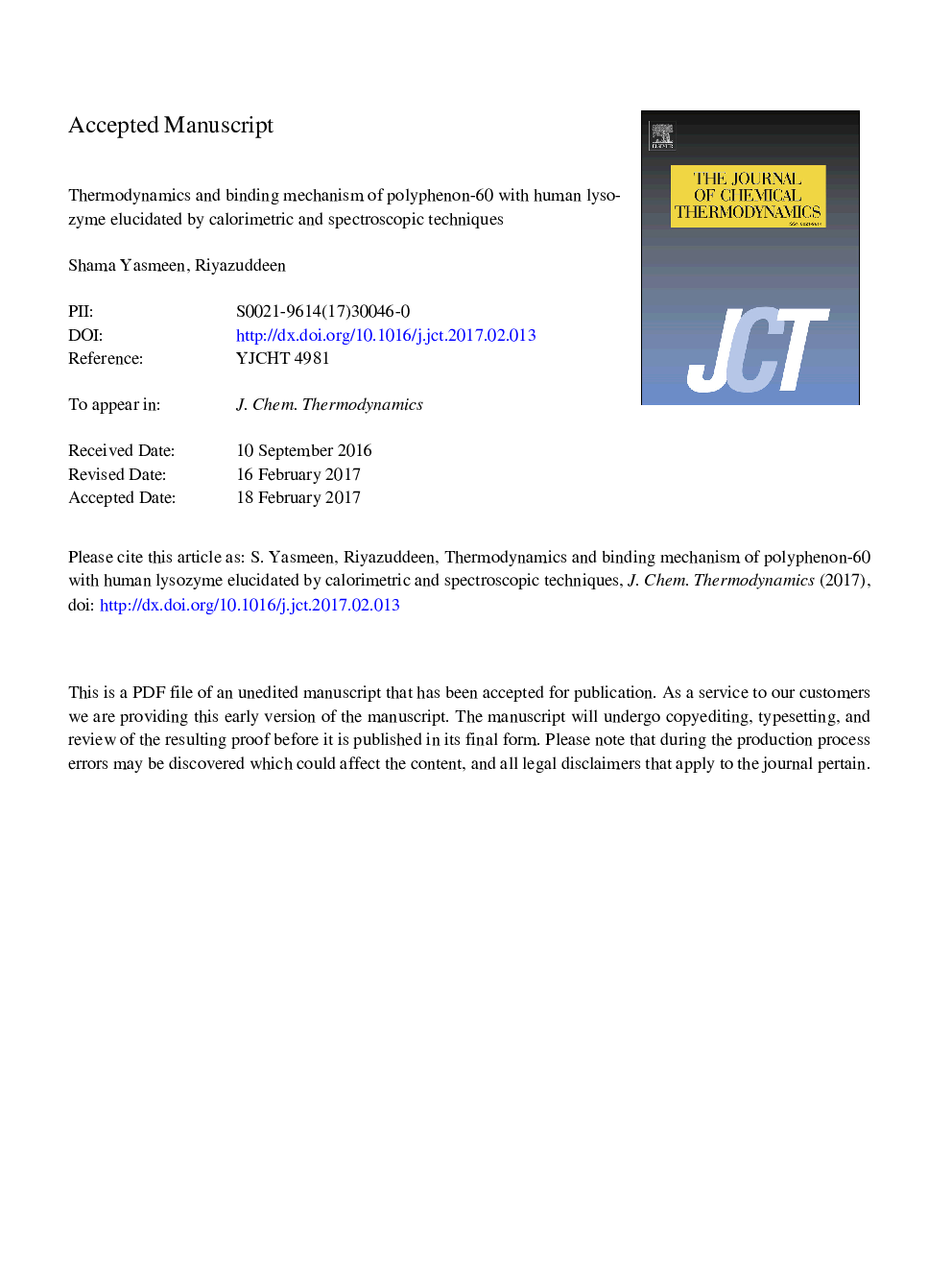| Article ID | Journal | Published Year | Pages | File Type |
|---|---|---|---|---|
| 4769540 | The Journal of Chemical Thermodynamics | 2017 | 27 Pages |
Abstract
Protein-drug interaction offer information of the structural features that determine the therapeutic effectiveness of drug and have become an attractive research field in life science, chemistry, and clinical medicine. Interaction of pharmacologically important antioxidant drug polyphenon-60 with human lysozyme (Lys) at physiological pH 7.4 has been studied by using calorimetric and various spectroscopic techniques. UV-visible spectroscopy results indicate the complex formation between Lys and polyphenon-60. The binding constant, quenching mechanism and the number of binding sites were determined by the fluorescence quenching spectra of Lys in presence of polyphenon-60. Fluorescence data indicate that the polyphenon-60 interact with Lys through static quenching mechanism with binding affinity of 2.9Â ÃÂ 104Â Mâ1. The average binding distance between drug and Lys was found to be 2.89Â nm on the basis of the theory of Förster's energy transfer. Isothermal titration calorimetry (ITC) data reveals the thermodynamic investigations which suggest that the interaction of Lys and polyphenon-60 through exothermic process and enthalpy driven and also explore that the polyphenon-60 binds in both sites of Lys with high and low affinity. Hydrogen bonding (high affinity) and hydrophobic interactions (low affinity) are the major forces in stabilizing the drug protein complex. Far-UV CD and FTIR results deciphere the conformational alterations in the secondary structure of Lys.
Related Topics
Physical Sciences and Engineering
Chemical Engineering
Chemical Engineering (General)
Authors
Shama Yasmeen, Riyazuddeen Riyazuddeen,
